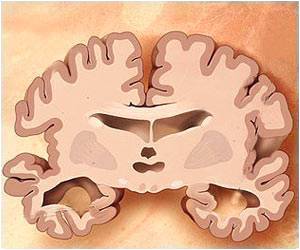Discover how pyroptosis, once thought purely inflammatory, is vital for wound healing and tissue repair.

Oxylipins and metabolites from pyroptotic cells act as promoters of tissue repair
Go to source).
‘Did You Know?
#Pyroptosis acts as both an accelerator and a brake—triggering inflammation with #cytokines while aiding #tissue_repair with its metabolites and #oxylipins. #medindia’





#Pyroptosis acts as both an accelerator and a brake—triggering inflammation with #cytokines while aiding #tissue_repair with its metabolites and #oxylipins. #medindia’
Apoptosis vs. Pyroptosis in Cellular Health
Every day, our bodies lose about one billion cells. A process known as apoptosis, a type of cellular maintenance that keeps us healthy, eliminates most cells.On the other hand, cells can die through a process known as pyroptosis when they are exposed to pathogens or inflammatory factors.
Pyroptosis creates intense inflammation, as the name implies (pyro means fire), which both severely damages tissue and aids in the body's ability to rid itself of infections.
Dual Role of Pyroptosis in Wound Healing
Pyroptosis has been viewed as purely inflammatory and damaging.However, this research suggests that alongside its tissue-damaging effects, pyroptosis also releases beneficial molecules that promote wound healing, potentially leading to new treatments for chronic wounds and inflammation.
Advertisement
However, when the inflammation is not resolved promptly or controlled, there can be excessive tissue damage. Cells undergoing pyroptosis contribute to this inflammation by releasing inflammatory molecules.
Thus, pyroptosis acts as both an accelerator and a brake—triggering inflammation through cytokines while simultaneously aiding tissue repair with its metabolites and oxylipins.
One of the key wound-healing molecules that the researchers identified is prostaglandin E2, known for its role in pain and tissue regeneration.
The pyroptotic secretome, the molecules secreted by dying cells, significantly enhances the body’s ability to repair damaged tissues, even in the presence of inflammatory molecules.
This study suggests that current strategies to develop treatments by blocking pyroptosis may need to be reconsidered. While this can prevent damage, it might also inhibit the release of essential molecules that aid in tissue repair.
Instead, the newly identified small molecules and lipids from the pyroptotic secretome could be harnessed to develop new therapies, offering new hope for patients suffering from chronic wounds or inflammatory diseases.
Reference:
- Oxylipins and metabolites from pyroptotic cells act as promoters of tissue repair - (https:www.nature.com/articles/s41586-024-07585-9)
Source-Eurekalert







